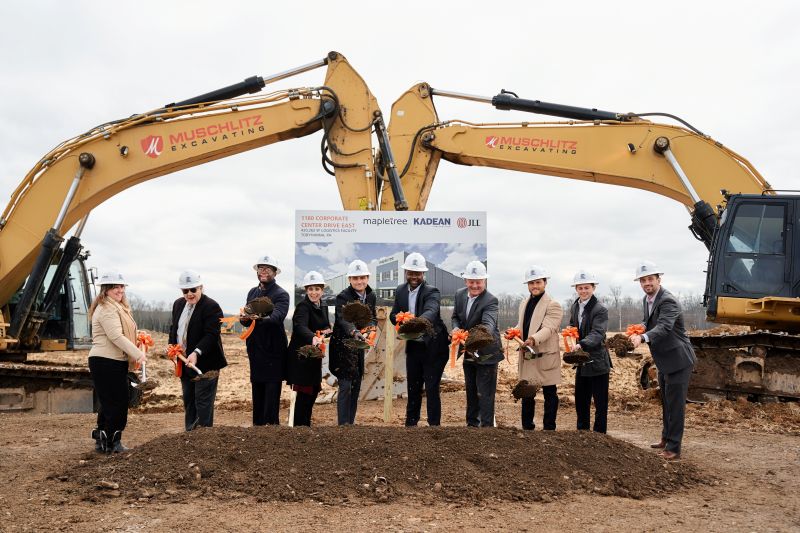Renewed AFIDA Enforcement – Key Considerations for Energy and Infrastructure Projects – The National Law Review

Report on the Agricultural Foreign Investment Disclosure Act (AFIDA) and its Implications for Sustainable Development
Introduction: Regulatory Scrutiny and its Impact on Sustainable Development Goals
A significant shift in the enforcement of the Agricultural Foreign Investment Disclosure Act of 1978 (AFIDA) presents new challenges for foreign-funded energy and infrastructure projects. This renewed regulatory focus, driven by national security concerns, intersects directly with the global pursuit of the Sustainable Development Goals (SDGs). Foreign investment is a critical component of SDG 17 (Partnerships for the Goals) and is essential for financing projects that advance SDG 7 (Affordable and Clean Energy) and SDG 9 (Industry, Innovation, and Infrastructure). The heightened compliance environment surrounding AFIDA requires a careful balancing of national interests with the international cooperation needed to achieve these sustainability targets.
The Agricultural Foreign Investment Disclosure Act (AFIDA): A Compliance Overview
Core Provisions and Reporting Mandates
AFIDA was enacted to monitor foreign ownership of U.S. agricultural land. Its primary function is data collection rather than prohibition. Key provisions relevant to sustainable development projects include:
- Ownership Threshold: Reporting is required for entities with a minimum of 10% direct or indirect foreign ownership.
- Reportable Actions: The acquisition, disposition, or change in use of U.S. agricultural land must be reported to the USDA’s Farm Service Agency.
- Definition of Agricultural Land: The term is defined broadly, encompassing land used for farming, ranching, or timber production within the last five years. This often includes rural sites repurposed for development.
- Applicable Interests: The act covers not only direct fee ownership but also leasehold interests of 10 years or longer, a common structure for energy projects.
- Penalties: Non-compliance can result in substantial civil penalties, potentially reaching up to 25% of the property’s fair market value.
Implications for SDG-Related Projects
The broad scope of AFIDA directly impacts projects central to the SDG agenda. Land designated for renewable energy installations (contributing to SDG 7) or new infrastructure (supporting SDG 9 and SDG 11) frequently meets the criteria for “agricultural land.” Consequently, foreign investors and developers in the green energy sector face a significant, and often overlooked, reporting obligation. This regulatory layer can introduce delays and increase compliance costs, potentially hindering the pace of investment in sustainable infrastructure necessary for the clean energy transition.
Escalating Enforcement and its Link to Sustainable Development Goals
Analysis of Recent Enforcement Trends
While historically enforcement of AFIDA was limited, recent years have seen a dramatic increase in activity, reflecting a growing focus on the nexus of foreign land ownership and national security. This trend is particularly evident in penalty assessments, which have surged since 2021. A significant portion of these enforcement actions has targeted renewable energy and infrastructure projects, which rely heavily on foreign capital—a key mechanism under SDG 17.
Recent penalty assessment data highlights this trend:
- 2012-2020: Minimal and sporadic penalties assessed.
- 2021: 2 penalties totaling approximately $135,000.
- 2022: 14 penalties totaling approximately $115,000.
- 2023: 7 penalties totaling approximately $320,000.
- 2024: 124 penalties totaling approximately $1,180,000.
Balancing National Interests with Global Sustainability Objectives
The intensified enforcement of AFIDA creates a complex dynamic. On one hand, monitoring foreign interests in agricultural land aligns with national food security concerns, a component of SDG 2 (Zero Hunger), and reinforces the role of strong institutions as outlined in SDG 16 (Peace, Justice, and Strong Institutions). On the other hand, creating a more stringent regulatory environment for foreign investors could impede the flow of capital essential for achieving SDG 7 and SDG 9. This tension underscores the challenge of aligning national policy with the global partnerships for sustainable development envisioned in SDG 17.
Strategic Compliance and Forward-Looking Recommendations for SDG Stakeholders
Key Considerations for Investors and Developers
To navigate this evolving landscape and ensure the continued progress of projects contributing to the SDGs, investors and developers must adopt a proactive compliance strategy. Treating AFIDA as a primary consideration rather than an afterthought is crucial. Recommended actions include:
- Conduct Early-Stage Due Diligence: Identify potential AFIDA triggers during the initial phases of site acquisition, leasing, and project financing to mitigate risks.
- Integrate Compliance into Legal Frameworks: Incorporate specific representations and covenants related to AFIDA compliance into all transactional documents.
- Prepare for Heightened Scrutiny: Anticipate more frequent data collection requests, audits, and rigorous oversight from federal and state regulators.
- Align Investment with Regulatory Realities: Ensure that investment strategies account for the compliance requirements of AFIDA to avoid jeopardizing projects vital to economic growth (SDG 8) and sustainable infrastructure (SDG 9).
The Evolving Legislative Landscape and the Future of Sustainable Investment
The current focus on AFIDA is further amplified by multiple legislative proposals aimed at expanding its scope and strengthening enforcement. Stakeholders in the sustainable development sector must remain vigilant and informed about these developments. The future of foreign-funded energy and infrastructure projects in the U.S. will depend on the ability of investors and developers to adeptly manage this complex regulatory environment. A balanced approach is necessary to safeguard national interests while fostering the international partnerships and investments required to achieve the 2030 Agenda for Sustainable Development.
Sustainable Development Goals (SDGs) Analysis
1. Which SDGs are addressed or connected to the issues highlighted in the article?
- SDG 7: Affordable and Clean Energy: The article directly addresses the energy sector, mentioning that recent enforcement actions have “targeted renewable and other energy and infrastructure projects” and highlights the “increased reliance on foreign capital in the industry.” This connects the regulation of land use to the financing and development of clean energy.
- SDG 9: Industry, Innovation and Infrastructure: The text is centered on “energy and infrastructure projects,” discussing the legal, transactional, and compliance risks for their development. It emphasizes how land acquisition and foreign investment are critical components of building this infrastructure.
- SDG 15: Life on Land: The core of the article is the Agricultural Foreign Investment Disclosure Act (AFIDA), a law governing the use and ownership of “U.S. agricultural land.” It discusses how land previously used for “farming, ranching, orchard, vineyard or timber production” is being repurposed for development, directly relating to land use and its management.
- SDG 16: Peace, Justice and Strong Institutions: The article provides a detailed analysis of a specific piece of legislation (AFIDA), its enforcement by a government institution (USDA), and the consequences of non-compliance. The discussion of the shift from historically limited enforcement to a “renewed enforcement environment” is a direct examination of institutional effectiveness and the rule of law.
- SDG 17: Partnerships for the Goals: The central theme is the role of international financial partnerships, specifically “foreign-owned developers,” “foreign investment,” and “foreign capital” in funding domestic infrastructure projects. The article explores the regulatory framework (AFIDA) that governs these international financial flows for development purposes.
2. What specific targets under those SDGs can be identified based on the article’s content?
-
Target 7.a: By 2030, enhance international cooperation to facilitate access to clean energy research and technology, including renewable energy, energy efficiency and advanced and cleaner fossil-fuel technology, and promote investment in energy infrastructure and clean energy technology.
- The article supports this target by discussing the critical role of “foreign investment” and “foreign capital” in the development of “renewable and other energy and infrastructure projects.” The AFIDA regulation is presented as a key compliance consideration within this investment landscape.
-
Target 9.1: Develop quality, reliable, sustainable and resilient infrastructure, including regional and transborder infrastructure, to support economic development and human well-being, with a focus on affordable and equitable access for all.
- The article’s focus on “energy and infrastructure development” and the legal frameworks surrounding it directly relates to the process of developing such infrastructure. The compliance risks discussed are a factor in the successful development of these projects.
-
Target 15.3: By 2030, combat desertification, restore degraded land and soil, including land affected by desertification, drought and floods, and strive to achieve a land degradation-neutral world.
- The article relates to this target by focusing on a law that tracks the ownership and change in use of “agricultural land.” The repurposing of land for energy projects is a form of land-use change that regulations like AFIDA are designed to monitor, which is a foundational step in managing land resources sustainably.
-
Target 16.6: Develop effective, accountable and transparent institutions at all levels.
- The article provides a clear example of this target in action by describing how the USDA’s enforcement of AFIDA has shifted from being historically “limited due largely to funding and staffing constraints” to a “renewed enforcement environment” with “more frequent audits, and higher penalty assessments.”
3. Are there any indicators mentioned or implied in the article that can be used to measure progress towards the identified targets?
-
Indicator for Land Use Monitoring (related to SDG 15): The total acreage of agricultural land held by foreign interests.
- The article explicitly states this data point: “approximately 45 million acres of U.S. agricultural land held by foreign entities as of December 2023.” This serves as a direct indicator for monitoring foreign-held land assets.
-
Indicator for Institutional Effectiveness (related to SDG 16): The number and value of penalties assessed for non-compliance with national regulations.
- The article provides a detailed table showing the “Number of Penalties Assessed” and “Aggregate Penalties” from 2012 to 2024. The dramatic increase from 2 penalties in 2021 to 124 in 2024, and from $135,000 to $1,180,000 in fines, is a quantifiable measure of increased institutional enforcement.
-
Indicator for International Investment Flows (related to SDG 7, 9, 17): The level of reliance on foreign capital for domestic projects.
- While not providing a specific monetary value, the article implies this indicator by stating there is an “increased reliance on foreign capital in the industry” and that “foreign investment continuing to play a critical role in project development and financing.” The enforcement of AFIDA itself is a response to the scale of this investment.
Summary Table of SDGs, Targets, and Indicators
| SDGs | Targets | Indicators |
|---|---|---|
| SDG 7: Affordable and Clean Energy | 7.a: Promote investment in energy infrastructure and clean energy technology. | The implied importance and scale of “foreign capital” and “foreign investment” in funding “renewable and other energy” projects. |
| SDG 9: Industry, Innovation and Infrastructure | 9.1: Develop quality, reliable, sustainable and resilient infrastructure. | The focus on compliance risks for “energy and infrastructure projects,” indicating active development in the sector. |
| SDG 15: Life on Land | 15.3: Strive to achieve a land degradation-neutral world. | The specific figure of “approximately 45 million acres of U.S. agricultural land held by foreign entities as of December 2023.” |
| SDG 16: Peace, Justice and Strong Institutions | 16.6: Develop effective, accountable and transparent institutions at all levels. | The data table showing the “Number of Penalties Assessed” and “Aggregate Penalties” from 2012-2024, which quantifies the increase in enforcement activity by the USDA. |
| SDG 17: Partnerships for the Goals | (General Goal) Strengthen the means of implementation and revitalize the global partnership for sustainable development. | The article’s central theme of regulating “foreign investment” and “foreign-owned developers” in domestic projects, reflecting the management of international financial partnerships. |
Source: natlawreview.com
What is Your Reaction?
 Like
0
Like
0
 Dislike
0
Dislike
0
 Love
0
Love
0
 Funny
0
Funny
0
 Angry
0
Angry
0
 Sad
0
Sad
0
 Wow
0
Wow
0




















































.jpg.webp?itok=0ZsAnae9#)



























